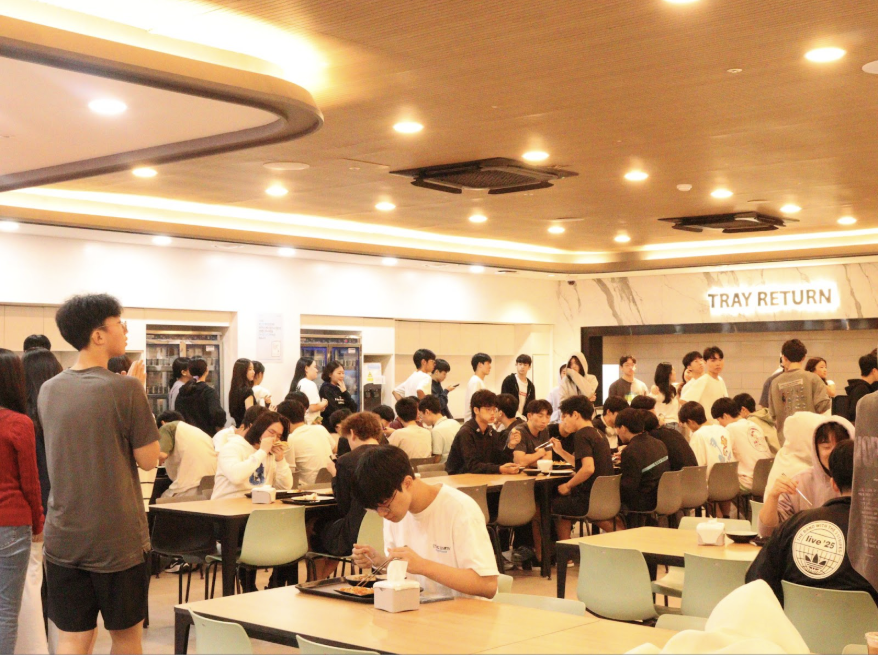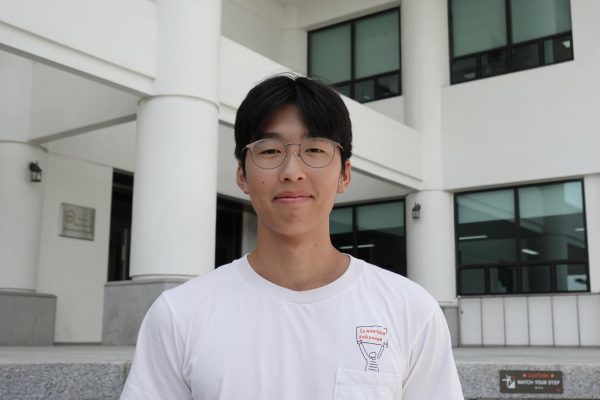When the clock hits 12:40 p.m., students finish their third-period class and head straight to the cafeteria with their peers, thinking about what to choose from the day’s menu options. However, upon arriving, they are startled by the presence of more than 50 students waiting behind the Korean section, with the line extending until the Tiger’s Den.
As if attending three classes in the morning was not tiring enough, students are forced to wait as their stomachs grumble intensely, with each passing second draining their energy while they wait in line. Cafeteria lunch lines have been a pressing issue over the past few weeks of school, especially due to the fact that so many students are simultaneously affected by it.
The long lunch lines are also the cause of significant amounts of stress due to the tight schedule, since the activity period immediately follows lunch and leaves students with limited time to eat and transition to their clubs. When students spend over 10 minutes in line and have to go to activity period immediately afterward, how are they supposed to have enough time to eat without being late to clubs? This rushed and stressful schedule contributes to the lack of rest and socializing, as well as decreased concentration in class, which ultimately leads to poor academic performance.
Beyond academics, longer lunch lines can indirectly raise health concerns. Completely skipping meals or rushing through food can lead to indigestion, fatigue, and decreased energy levels throughout the day. In the long run, students can experience detrimental effects on their well-being and physical health.
As such, many improvements should be made to shorten the lunch lines. Establishing two serving stations for each cuisine would not only create more lines but also make the entire waiting process more efficient, since each student is given food twice as quickly. Marking each line clearly will also improve organization.
Another option would be to expand the number of grab-and-go alternatives, such as sandwiches, fruits, and packaged hot meals that are more filling than the existing takeout options. Although workers may have to prepare more food beforehand, students can have a quick yet satisfying meal that allows them to save time socializing, working on homework, and preparing for their next class.
The final solution would be to increase the number of cafeteria staff members present during lunchtime. With more staff serving food, lines will move more quickly, and students will spend less time waiting. More workers will ultimately allow for different tasks, such as serving meals, replenishing food, and cleaning tables, to be divided much more evenly to save time.
A common issue previously with the cafeteria was that the available food of a certain section would run out, meaning that a new batch had to be cooked, or a different, usually lower-quality meal would replace the existing one. This caused students to wait in lines for extended periods of time, but with a system where more staff operate together, such issues will no longer be a problem.
Ultimately, the long lunch lines are not just an issue of convenience but of student health, fairness, and academic focus. Since the cafeteria plays a central role in school life, the school needs to ensure that its students can reach their full potential both inside and outside the classroom.


